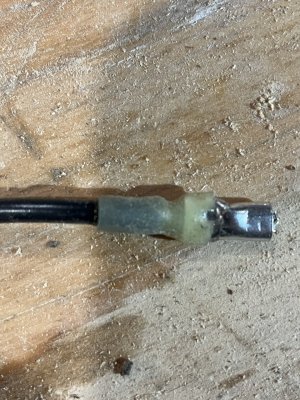Grace underfire
Active Member
Hi All,
As per the title, I've now installed my 2nd new receptacle for my Scotty Downriggers and the terminal screws seem to leave the wire pretty loose. The amount of force needed to pull the wire out is minimal and I'm thinking over time just bouncing around on my boat will pull them out. Can I silicone these? Other ideas?
As per the title, I've now installed my 2nd new receptacle for my Scotty Downriggers and the terminal screws seem to leave the wire pretty loose. The amount of force needed to pull the wire out is minimal and I'm thinking over time just bouncing around on my boat will pull them out. Can I silicone these? Other ideas?


